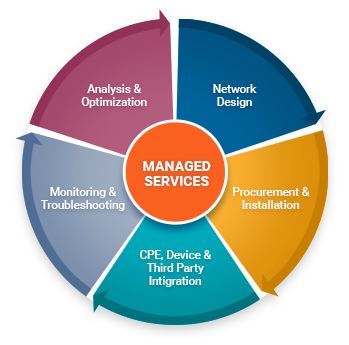Companies today are mostly dependent on IT and other computer technologies to go about their daily operations. That said, even a miniscule hiccup in the processes and equipment can put the whole business in danger.
Whether the company has an internal IT department or an outsourced MSP services, disaster recovery planning is important. By making sure that you have a Disaster Recovery Plan (DRP) in place, it will be easy for the organization to recover its full operational capacity in no time.
However, if your disaster recovery and backup plan is still incomplete because your internal IT department is too busy with other tasks, it's best to delegate the planning stage to a managed IT service provider (MSP). Outsourcing the service can alleviate a great deal of internal conflict and could even help with resource and asset allocation during the DRP.
How do we plan and execute a disaster recovery strategy? Let us answer them below.
The initial step you can take for disaster recovery planning is to determine the things that could fail during your operation. This includes equipment, user errors, malware, hacker attacks, and natural disasters. Although some of these threats could be avoided, other failure types could leave you (and potentially, the rest of the country) in disorder for quite some time.
Regular checkups and updates make it simple to plan for and prevent equipment failure. However, equipment upkeep can be costly. Furthermore, electronics, particularly computers, depreciate rapidly, so businesses must account for this. That said, the general rule is to buy new equipment within 5-7 years from the previous purchase.
Malware or HackingIn an ideal world, your disaster management strategy will shield you from malicious programs or external attacks. There should be no problems if you have dependable antivirus and prevention mechanisms in place. As malware threats evolve, you may find yourself rethinking this aspect of your disaster recovery plan on a regular basis. It is recommended to install regular system updates as soon as they become available to take care of bugs.
Your employees can benefit from cybersecurity and information security training. Doing this will enable them to identify phishing emails, spam links, and outright scams. As a result, they will gain sufficient knowledge and competency to avoid causing harm to company equipment, network, and infrastructure.

The majority of user errors occur because staff members have not been properly trained on an application or piece of equipment. They may not even consider the implications of specific actions. User errors can happen as a result of insufficient user permissions. One way to avoid this is to ensure that each employee has the necessary system access. The MSP services, IT department, and management can determine what information each employee needs to access.
Unavailability of Key PersonneAnother thing that you have to prepare for is the absence of critical personnel. If one of the administrators with special permissions is injured, you should have a way to recover data during this time.
Natural DisastersThis type of disaster is more difficult to deal with, but it is also more common. They may cover a larger area, such as a city, a region, or the entire country. While natural disasters are more severe, resuming service is still critical if the company is the first responder.
Once power and connectivity are restored (and the external threat has been removed), you can implement a plan to recover what you can right away. Some businesses that operate in 'earthquake zones' will have specific recovery plans in place for this event.
Importance of Disaster Recovery Plan
Prevent FailureHaving DRP in place can reduce human error, outside attacks, and equipment downtime. The prevention stage, which includes training personnel, ensuring system security, and adhering to a routine maintenance plan can help you recover in the shortest time possible.
Sustain OperationFor some businesses, maintaining operations is the lifeblood of the company. If a company can keep the bare minimum of running processes during a disaster, it will be fine. Maintaining business continuity allows you to operate functions during an emergency.
Recover FastWhile you can sustain some part of the operations during a disaster, it is still better to explore the company’s potential to return to full capacity. Having a comprehensive DR plan can provide a clear roadmap towards recovery.
Conclusion
You should take note that neglecting DRP could bring you problems during recovery. Any issue could arise at any time, and being prepared will allow companies to resume operations seamlessly.
MSP services that build a fine-tuned disaster recovery plan can take the stress out of an organization. They can transition smoothly amidst whatever disaster or disruption they face.